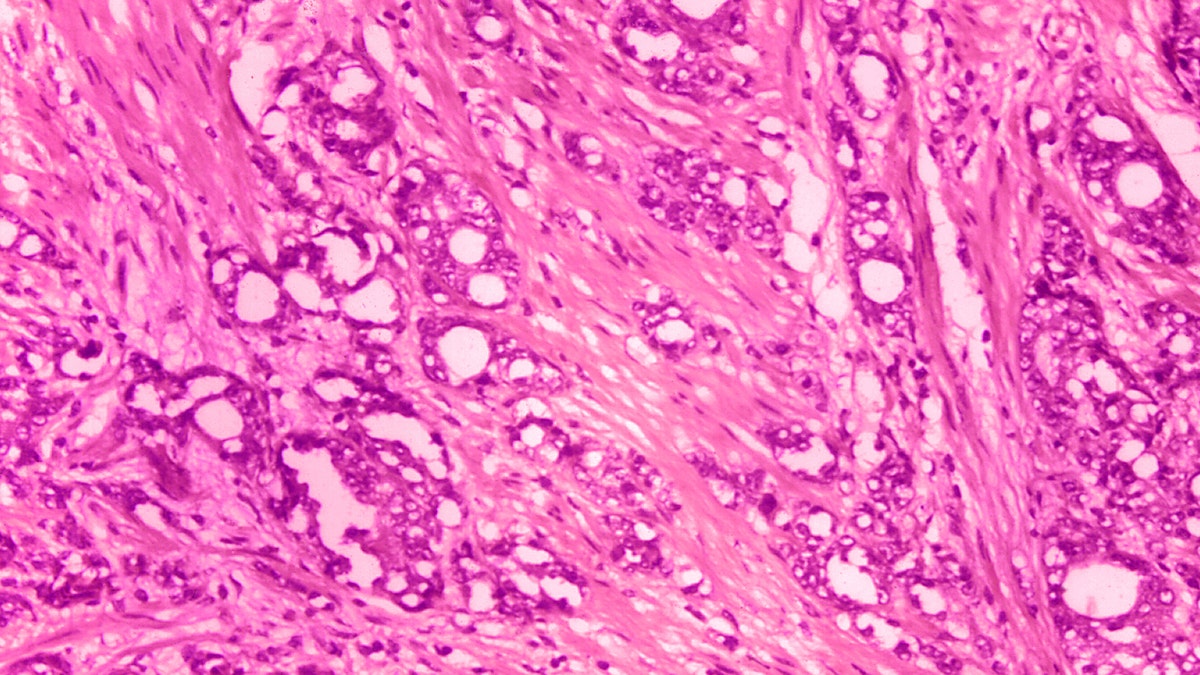Charlie Gasparino opens up about his battle with prostate cancer
Charlie Gasparino shares his story and message on 'Your World.'
Men diagnosed with localized prostate cancer who want to avoid immediate surgery or radiation can safely choose to actively monitor the disease as a treatment method, according to a study released Saturday in the New England Journal of Medicine.
Researchers in the study determined most men shouldn't panic or rush to treatment decisions following a diagnosis as the mortality rate from the cancer 15 years later was relatively low regardless of treatment approach.
The study, which began in the United Kingdom in 1999, involved 2,664 men between the ages of 50 and 69 who were diagnosed with localized prostate cancer. Of those men, 1,643 were enrolled in a trial studying three different treatment methods - surgery to remove tumors (553), radiation (545), and active monitoring (545).
After a median range of 15 years, researchers compared the participants with death from prostate cancer and death from other causes. The study noted that more than one third of the men were considered to be intermediate or high-risk when diagnosed.
COULD A URINE TEST DETECT PANCREATIC AND PROSTATE CANCER? STUDY SHOWS 99% SUCCESS RATE

This 1974 microscope image made available by the Centers for Disease Control and Prevention shows changes in cells indicative of adenocarcinoma of the prostate. (Dr. Edwin P. Ewing, Jr./CDC via AP)
Out of the 1,610 patients who were followed up on, 45 men died from prostate cancer – 17 who were in the active-monitoring group, 12 who had surgery to remove tumors, and 16 who completed radiation.
Death not attributed to prostate cancer occurred in 356 men with similar numbers in all three treatment groups.
Once follow up was completed, 133 men in the active-monitoring group were alive without any prostate cancer treatment.
There were no differential effects on cancer-specific mortality noted in relation to the baseline PSA level, tumor stage or grade, or risk-stratification score, the study revealed. After the 10-year analysis, there were also no reported treatment complications.

X-Ray Slides of a Patient with Prostate Cancer (iStock)
At 15 years, cancer had spread in 9.4% of the active-monitoring group, 4.7% of the surgery group and 5% of the radiation group.
Lead author Dr. Freddie Hamdy, of the University of Oxford, wrote researchers saw a difference in cancer spread at 10 years and expected it to make a difference in survival at 15 years, but that was not the case. He added that spread alone does not predict death from prostate cancer.
NORTH CAROLINA MAN DEVELOPED 'UNCONTROLLABLE' IRISH ACCENT DURING PROSTATE CANCER TREATMENT
Dr. Stacy Loeb, a prostate cancer specialist at NYU Langone Health who was not involved in the research, told The Associated Press the results are encouraging for men who want to avoid sexual and incontinence problems that may arise from treatment.
"We have more ways now to help catch that the disease is progressing before it spreads," Loeb said. In the U.S., about 60% of low-risk patients choose monitoring, now called active surveillance.
Hamdy said the "new and interesting" results allow most men to "consider carefully the possible benefits and harms caused by the treatment options," though he specified the few patients with high-risk or advanced disease do need urgent treatment.

The Tulane Cancer Center in New Orleans will be the first in the US to treat prostate cancer with a new experimental drug already being tested in Europe. The drug, Alpharadin, used for treatment in advanced diagnosis, destroys cancer cells that have spread to the bone (highlighted in the image) while leaving healthy bone marrow intact. (Tulane Cancer Center)
CLICK HERE TO GET THE FOX NEWS APP
The findings were also presented at a European Association of Urology conference in Milan, Italy.
The research was paid for by Britain’s National Institute for Health and Care Research.
The Associated Press contributed to this report.


